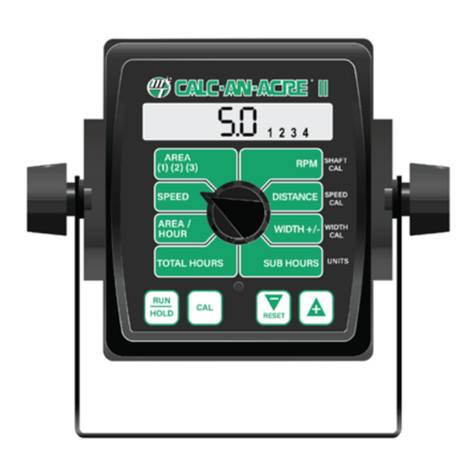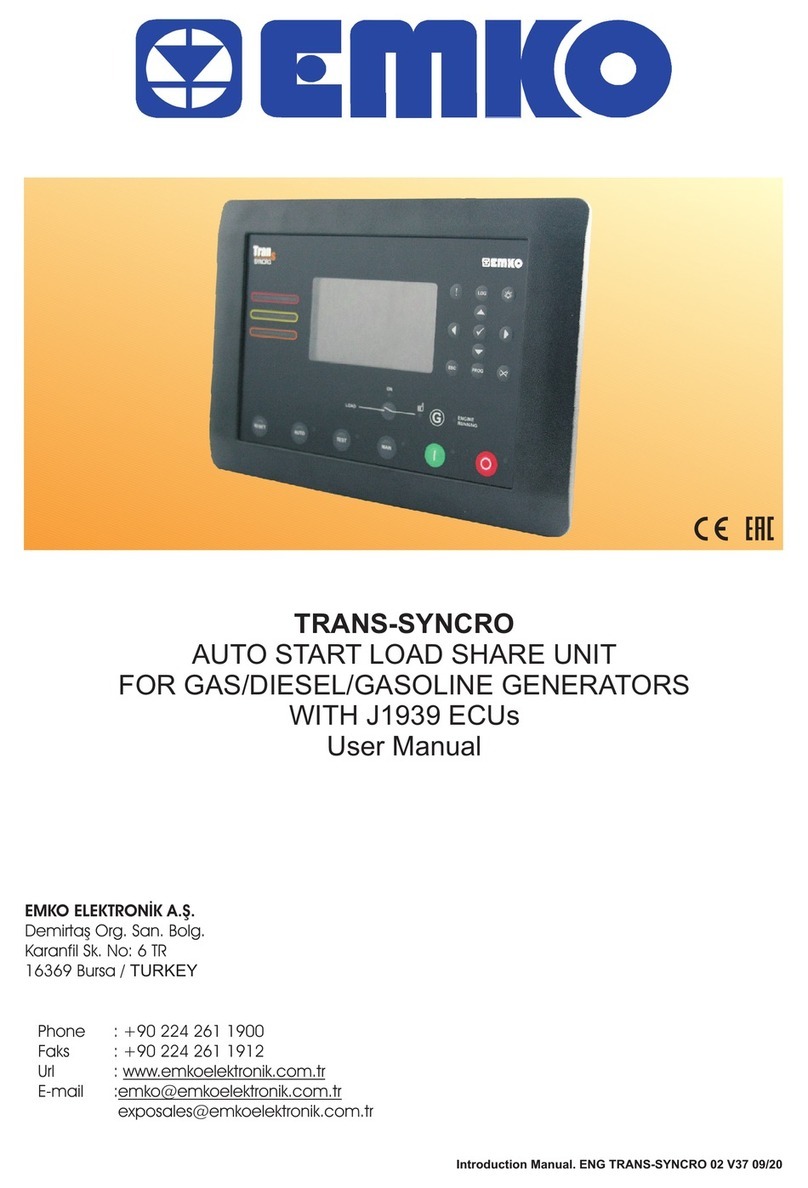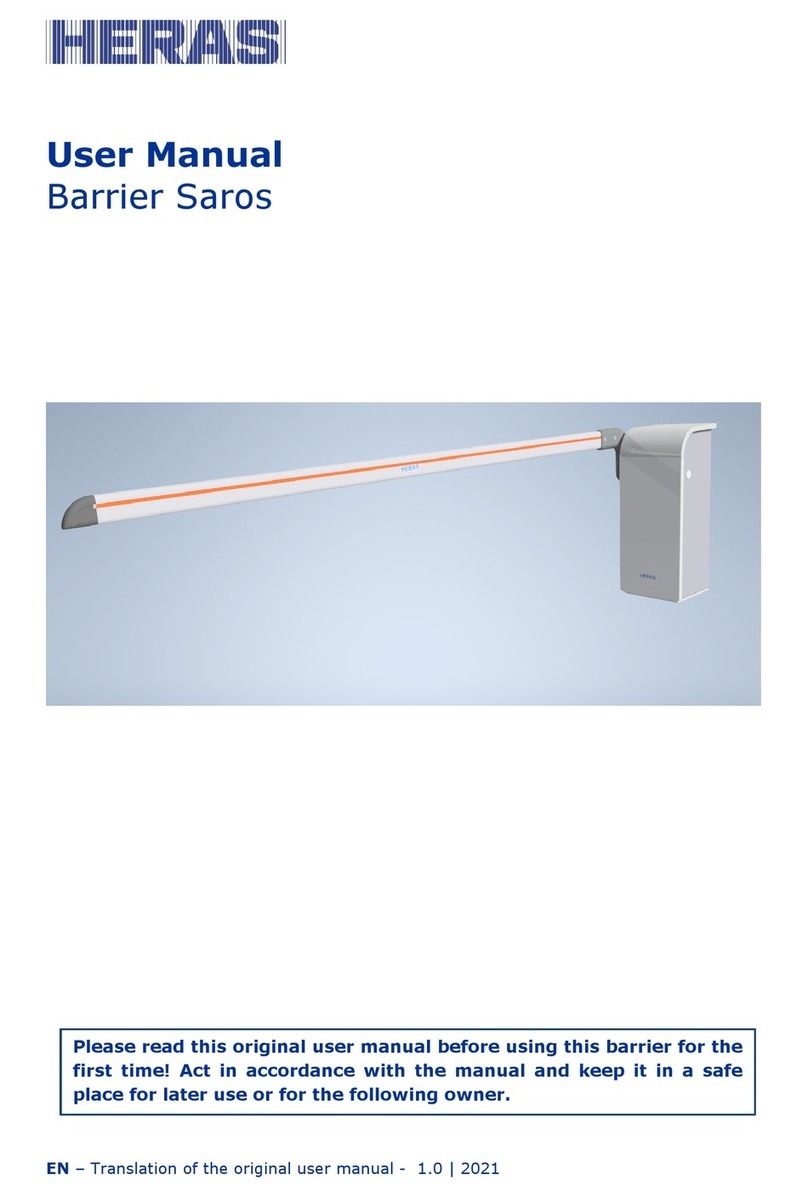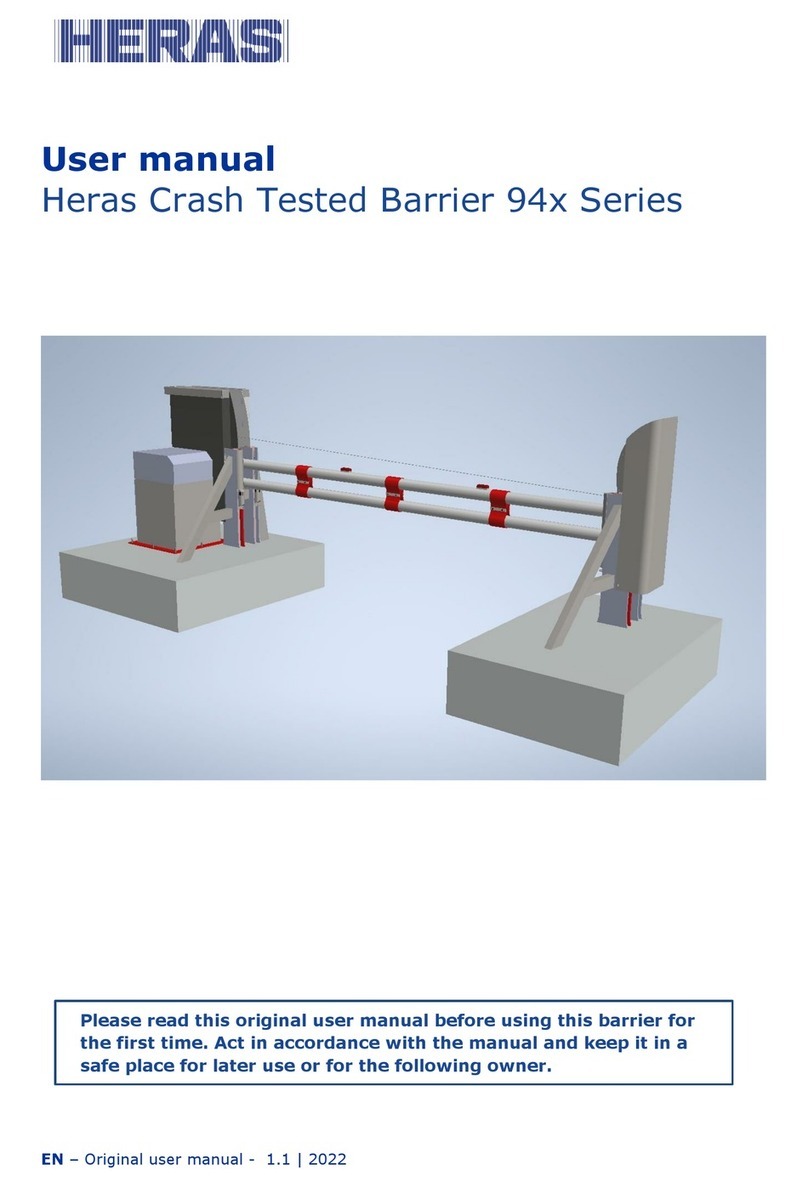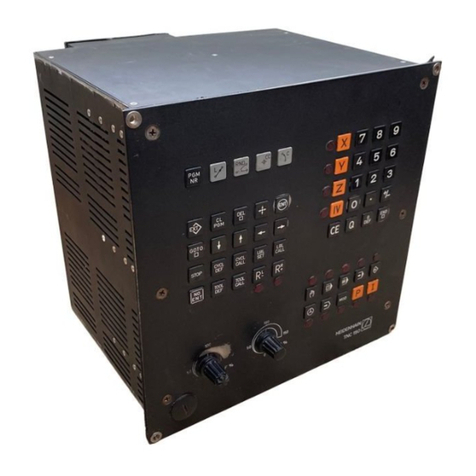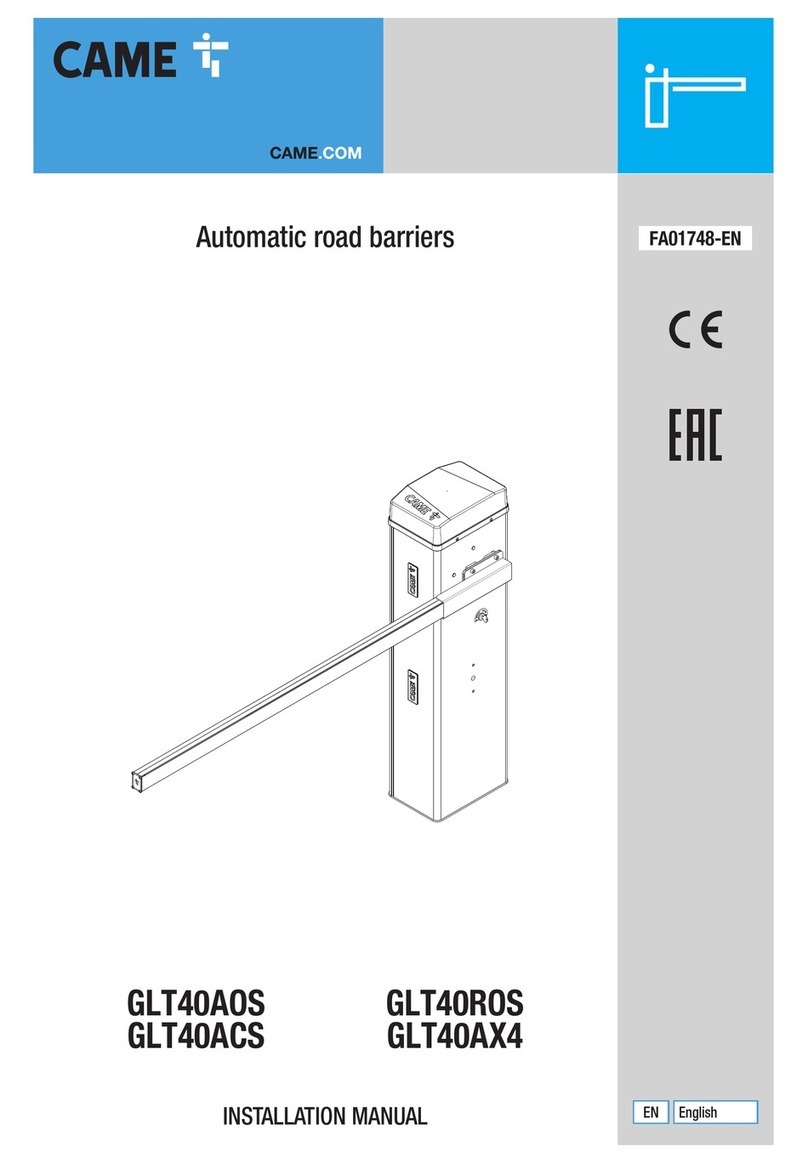
EN | Original User Manual | 1.3
9
3.2 BARRIER INSTALLATION
• Before installation commences thoroughly check all base sizes and positions in accordance
with the issued drawings.
• Check the quantity, sizes and positions of all installed mains, control and loop cables
within the ducts.
• With beam removed, position barrier as shown on the drawings and check the supplied
beam length is equal or more than, that which is required.
• For guidance only and if an end support post is being used: -
• If Trief kerbs are installed, the beam should be at least 1124mm longer than the kerb-to-
kerb width.
• If standard kerbs are installed, the beam should be at least 604mm longer than the kerb-
to-kerb width.
• If there are no kerbs the beam length should be at least 364mm longer than the
foundation-to-foundation width.
• Fix the barrier in position using 1 M10 Hilti type bolt in the central xing position. Ensuring
that the cables are pulled through the rectangular 100 x 250 cut out in the barrier base
plate.
• Connect the mains supply into the isolator.
• Connect the control and loop cables (if installed.)
• Check the barrier raises and lowers correctly.
• Lower the barrier to horizontal. The mains must now be isolated using the isolator
switch within the barrier cabinet.
• Attach the barrier beam.
• Check the alignment of the beam across the entrance, ensuring that it lies central within
the end support post (if supplied).
• Fit the remaining 5 x M16 xing down bolts, ensuring that the barrier base is shimmed
level before the bolts are fully tightened.
• Commission the barrier.



